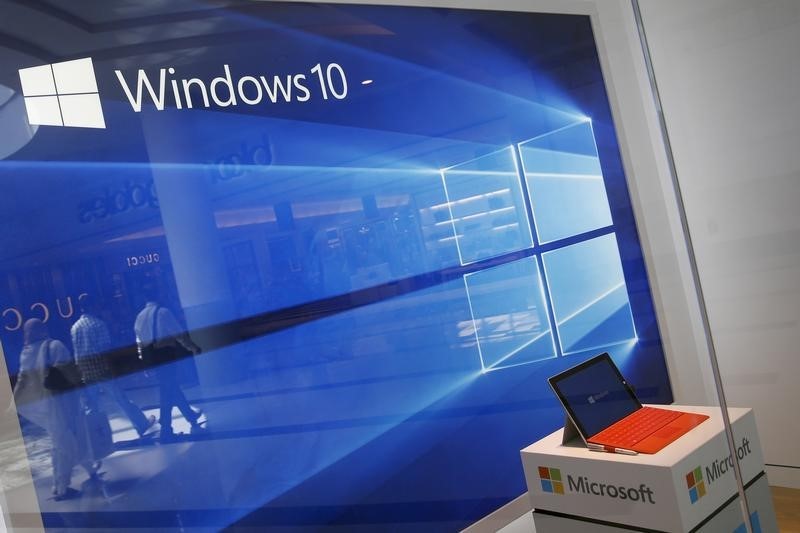US LNG exports surge but will buyers in China turn up?
Investing.com -- The Bank of Japan maintained its dovish stance, acting as an outlier among most major central banks. Chinese growth forecasts receive several downgrades, but Microsoft hits a record market capitalization on the back of AI optimism.
1. Bank of Japan stays dovish
The Bank of Japan was the last of the senior central banks to meet in this action-packed week and announced earlier Friday that it has maintained interest rates at ultra-low levels as well as keeping its yield curve control program unchanged.
This was largely as expected, with new Governor Kazuo Ueda just getting his feet under the table. However, he has warned that the BoJ will eventually have to change this stance, especially as inflation rises further above the central bank’s 2% annual target.
Still, as it currently stands, the Japanese central bank remains an outlier among major global central banks, with the Federal Reserve, the European Central Bank and the Bank of England all signaling more hikes to come.
This has weighed heavily on the yen, which was trading near seven-month lows versus the dollar, but also boosted the Nikkei 225 equity index to levels not seen for three decades.
2. Confidence surrounding China’s recovery wanes
The rebound in China’s vibrant economy after the severe COVID restrictions were lifted was meant to power the global economy this year as Western central banks tackled inflation.
However, this theory is looking very outdated, as a slew of data shows a post-COVID recovery was faltering in the world’s second largest economy.
Bank of America (NYSE:BAC) earlier Friday joined a growing list of major Western banks to cut their China economic growth forecasts for 2023, saying it now expects the economy to expand 5.7% this year, compared with an earlier estimate of 6.3% growth.
JPMorgan (NYSE:JPM) had earlier trimmed its outlook to 5.5% from 5.9%, while UBS (SIX:UBSG) economists cut their GDP forecast to 5.2% from 5.7% and Standard Chartered (LON:STAN) lowered its 2023 growth forecast to 5.4% from 5.8%.
The People’s Bank of China has cut a couple of key interest rates this week, but it looks almost certain that Beijing will need to do more to stimulate this important regional growth driver.
3. Futures just higher; Michigan sentiment data due
U.S. futures traded marginally higher Friday heading into the long weekend, as investors turned their attention from the Federal Reserve to the release of data that should provide clues to the future economic outlook.
At 04:45 ET (08:45 GMT), the Dow futures contract had climbed 25 points or 0.1%, S&P 500 futures rose 4 points or 0.13%, and Nasdaq 100 futures climbed 20 points or 0.1%.
The main equity averages are on course to record winning weeks after the Fed paused its rate-hiking cycle earlier this week after 10 consecutive increases since last year.
The broad-based S&P 500 is up nearly 3% so far this week, on pace to register its best weekly performance since March. The tech-heavy Nasdaq Composite is up nearly 4%, while the blue-chip Dow Jones Industrial Average has gained 1.6%.
Fed chair Jerome Powell indicated that future rate decisions would be made on a meeting-by-meeting basis, putting the focus on upcoming economic data as guides to future action.
The University of Michigan's consumer sentiment reading is next on the slate and is expected to show a reading of 60 in June, up from 59.2 in the previous reading.
In corporate news, Virgin Galactic (NYSE:SPCE) has announced plans for its first commercial space tourism flight at the end of this month, while computer software company Adobe (NASDAQ:ADBE) impressed with its quarterly results.
4. Microsoft in demand on AI optimism
Microsoft (NASDAQ:MSFT) is the latest hot ticket on Wall Street, with the software giant’s stock closing at a record high on Thursday, resulting in a record market capitalization of $2.59 trillion.
Microsoft’s ambitions in the lucrative video games market received a blow earlier this week after a U.S. judge granted the Federal Trade Commission’s request to temporarily block the tech colossus’s acquisition of Activision Blizzard (NASDAQ:ATVI).
However, it’s the move into artificial intelligence which has captured the imagination of investors, with Microsoft rolling out a host of AI upgrades, including ChatGPT, to Azure cloud services as well as its search engine Bing.
Microsoft finance chief Amy Hood said earlier this week that “the next generation AI business will be the fastest-growing $10 billion business in our history.”
Its stock has gained more than 45% in the year to date, but more gains look possible given Microsoft is seen as a leader in the adoption of AI technology in the software industry.
5. Oil on course to end two-week losing streak
Crude prices edged lower Friday, but were still on course to register a positive week helped by optimism over demand from China, the world’s largest crude importer, as well as a weaker dollar.
By 04:42 ET, U.S. crude futures were 0.2% lower at $70.47 a barrel, while the Brent contract fell 0.2% to $75.56 per barrel.
Both benchmarks are set to record weekly gains of around 1%, snapping a two-week losing streak, after surging about 3% during the prior session.
China’s recovery is stuttering [see above], but the country’s central bank has started cutting interest rates and further assistance looks likely, stimulating activity in the second largest economy in the world.
Weak U.S. economic data has hit the dollar, which fell overnight to a five-week low versus a basket of other currencies. This makes oil, which is denominated in dollars, cheaper for foreign buyers.
Whether the market can continue to push higher “may well depend on what further improvements we see in the data and what policy actions are announced by the PBOC in the coming weeks,” said analyst Craig Erlam at MarketPulse.
“We probably can’t count on OPEC+ to do anything of significance any time soon after the Saudis were effectively forced to go it alone last week.”
